Related Research Articles
The World Factbook, also known as the CIA World Factbook, is a reference resource produced by the Central Intelligence Agency (CIA) with almanac-style information about the countries of the world. The official print version is available from the Government Printing Office. Other companies—such as Skyhorse Publishing—also print a paper edition. The Factbook is available in the form of a website that is partially updated every week. It is also available for download for use off-line. It provides a two- to three-page summary of the demographics, geography, communications, government, economy, and military of each of 267 international entities including U.S.-recognized countries, dependencies, and other areas in the world.
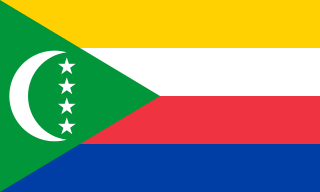
The Comoros, officially the Union of the Comoros, is an archipelagic country in the Indian Ocean, at the northern end of the Mozambique Channel off the eastern coast of Africa. It shares maritime borders with Madagascar and Mayotte to the southeast, Tanzania to the northwest, Mozambique to the west, and the Seychelles to the northeast. Its capital and largest city is Moroni. The religion of the majority of the population, and the official state religion, is Sunni Islam. As a member of the Arab League, it is the only country in the Arab world which is entirely in the Southern Hemisphere. It is also a member state of the African Union, the Organisation internationale de la Francophonie, the Organisation of Islamic Cooperation, and the Indian Ocean Commission. The country has three official languages: Comorian, French and Arabic.
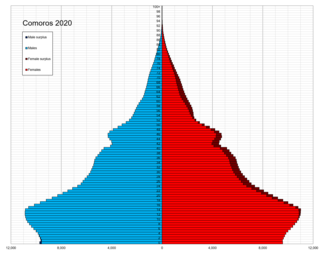
The Comorians inhabiting Grande Comore, Anjouan, and Mohéli share African-Arab origins. Islam is the dominant religion, and Quranic schools for children reinforce its influence. Although Islamic culture is firmly established throughout, a small minority are Christian.
The economy of French Polynesia is one of a developed country with a service sector accounting for 75%. French Polynesia's GDP per capita is around $22,000, one of the highest in the Pacific region.
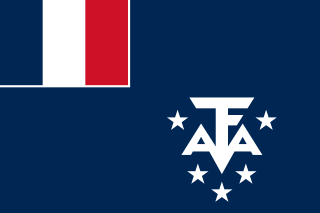
The Glorieuses or Glorioso Islands are a group of French islands and rocks totaling 5 square kilometres. They are controlled by France as part of the Scattered Islands in the Indian Ocean in the French Southern and Antarctic Lands, a French overseas territory, but are also claimed by Comoros, Madagascar and formerly by Seychelles. They are geographically part of the Comoro Islands between the French overseas region of Mayotte and the nation of Madagascar.

Mayotte is an overseas department and region and single territorial collectivity of France officially named the Department of Mayotte. It is located in the northern part of the Mozambique Channel in the Indian Ocean off the coast of Southeastern Africa, between Northwestern Madagascar and Northeastern Mozambique. Mayotte consists of a main island, Grande-Terre, a smaller island, Petite-Terre, as well as several islets around these two. Mayotte is the most prosperous territory in the Mozambique Channel, making it a major destination for illegal immigration.
This article is about the demographic features of the population of Mayotte, including population density, ethnicity, education level, health of the populace, economic status, religious affiliations and other aspects of the population. Mayotte's population density went from 179 persons per square kilometer in 1985 to 251 per square kilometer in 1991. Its capital, Dzaoudzi, had a population of 5,865 according to the 1985 census; the island's largest town, Mamoudzou, had 12,026 people.

New Caledonia is a major source for nickel and contains roughly 10% of the worlds known nickel supply. The islands contain about 7,100,000 tonnes of nickel. With the annual production of about 107,000 tonnes in 2009, New Caledonia was the world's fifth largest producer after Russia (266,000), Indonesia (189,000), Canada (181,000) and Australia (167,000). In recent years, the economy has suffered because of depressed international demand for nickel, due to the ongoing global financial crisis. Only a negligible amount of the land is suitable for cultivation, and food accounts for about 20% of imports. In addition to nickel, the substantial financial support from France and tourism are keys to the health of the economy. In the 2000s, large additions were made to nickel mining capacity. The Goro Nickel Plant is expected to be one of the largest nickel producing plants on Earth. When full-scale production begins in 2013 this plant will produce an estimated 20% of the global nickel supply. However, the need to respond to environmental concerns over the country's globally recognized ecological heritage, may increasingly need to be factored into capitalization of mining operations.
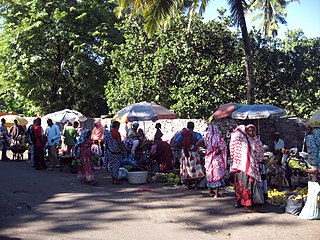
The economy of the Comoros is based on subsistence agriculture and fishing. Comoros has inadequate transportation links, a young and rapidly increasing population, and few natural resources. The low educational level of the labor force contributes to a subsistence level of economic activity, high unemployment, and a heavy dependence on foreign grants and technical assistance. The Comoros, with an estimated gross domestic product (GDP) per capita income of about $700, is among the world's poorest and least developed nations. Although the quality of the land differs from island to island, most of the widespread lava-encrusted soil formations are unsuited to agriculture. As a result, most of the inhabitants make their living from subsistence agriculture and fishing. Average wages in 2007 hover around $3–4 per day.
The economy of Saint Kitts and Nevis has traditionally depended on the growing and processing of sugar cane; decreasing world prices have hurt the industry in recent years. Tourism, export-oriented manufacturing, and offshore banking activity have assumed larger roles in Saint Kitts and Nevis. Most food is imported. The government has undertaken a program designed to revitalize the faltering sugar sector. It is also working to improve revenue collection in order to better fund social programs. In 1997, some leaders in Nevis were urging separation from Saint Kitts on the basis that Nevis was paying far more in taxes than it was receiving in government services, but the vote on cessation failed in August 1998. In late September 1998, Hurricane Georges caused approximately $445 million in damages and limited GDP growth for the year.

This page compares the sovereign states of Europe on economic, financial and social indicators.
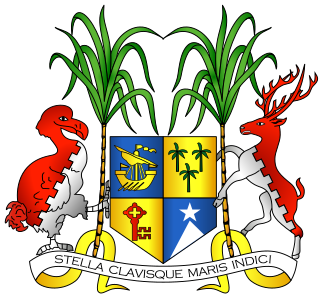
Outer Islands of Mauritius is the single first-order administrative division of the country and consists of the islands of Mauritius and several outlying islands. It is under the responsibility of the Ministry of Local Government and Outer Islands. The Constitution of Mauritius provides that the country includes the islands of Mauritius, Rodrigues, Agaléga, Saint Brandon, Tromelin and the Chagos Archipelago, including Diego Garcia and any other island comprised in the State of Mauritius. The Government of Mauritius claims sovereignty over the Chagos Archipelago, which the United Kingdom split from its territories to create the British Indian Ocean Territory before its independence in 1968. Additionally, France shares a sovereignty claim over Tromelin, an uninhabited islet between Madagascar and Mauritius' main island.

Mayotte – overseas department of France located in the Comoros Archipelago in the Indian Ocean. The department comprises the main island of Grande-Terre, a smaller island, Petite-Terre, and several islets at the northern end of the Mozambique Channel, between northern Madagascar and northern Mozambique. The territory is geographically part of the Comoro Islands, but has been politically separate since the 1970s. The territory is also known as Mahoré, the native name of its main island, especially by advocates of its inclusion in the Union of Comoros.
The economy of Saint Martin, divided between the French Collectivity of Saint Martin and the Dutch Sint Maarten, is predominately dependant on tourism. For more than two centuries, the main commodity exports have generally been salt and locally grown commodities, like sugar.
References
- 1 2 INSEE. "Résultats économiques" (PDF) (in French). Retrieved 2008-01-16.
